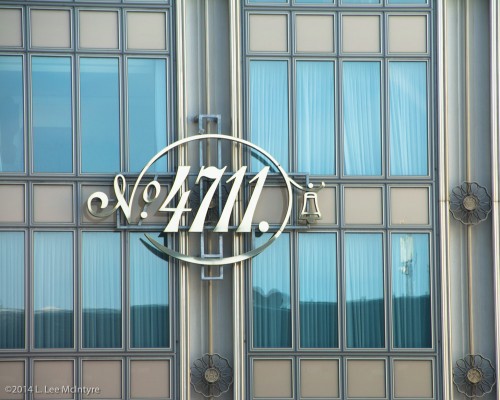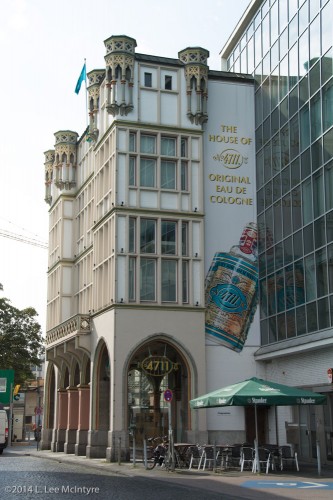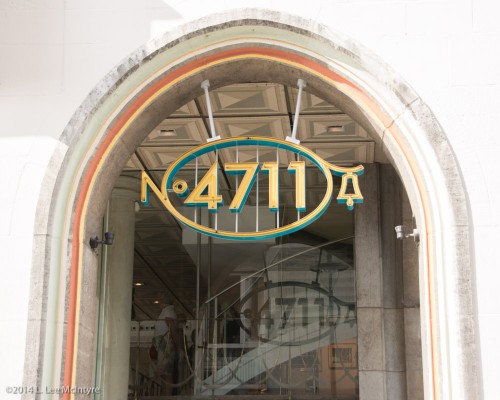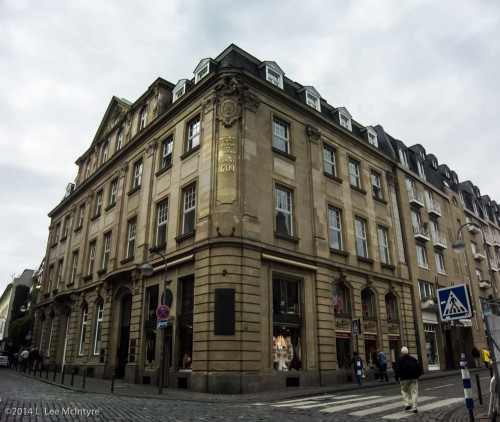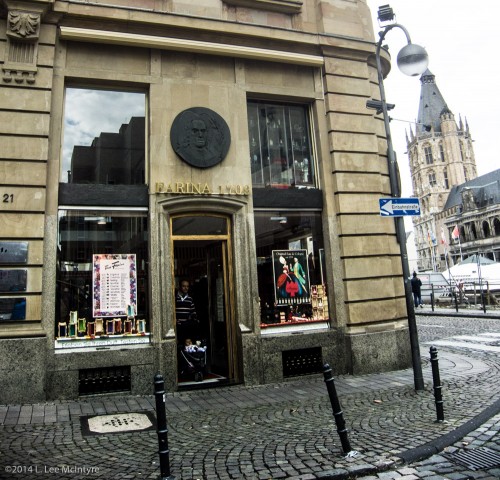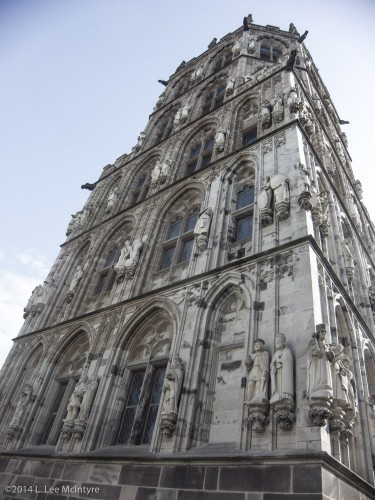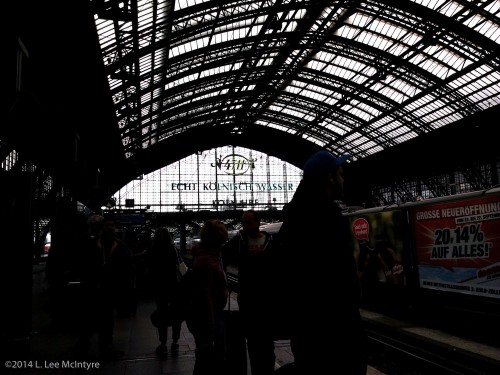Today on Monday Mysteries we take a look at the history of eau de cologne, and the centuries-old debate about who the true inventor of this perfume really was.
Now I don’t know about you, but I had never really thought about the origins of the perfume eau de cologne at all. But if you’d asked me before our travels in September, I’d have probably said it was invented in France. However, it was in fact invented in the German city of Köln, a city whose name in languages other than German is, of course, “Cologne.”
Right. OK, that makes sense now, but still … it was a surprise to me when we got to Cologne and saw signs proclaiming it to be the place that originated the perfume cologne. Not only that, it turns out there’s a bit of a rivalry of sorts between places in the city, as two different companies claim to be the real Eau de Cologne.
On the one hand, there’s 4711, which has given itself the tagline “Original Eau de Cologne”.
Here’s a description from the Wikipedia article on Cologne, which fails to mention that its location on Glockengasse is in a building whose architecture is a little over-the-top for the area:
The most famous Original Eau de Cologne is 4711, named after its location at Glockengasse No. 4711. It was also developed in the 18th century by Wilhelm Mülhens in Cologne and is therefore one of the oldest still produced fragrances in the world. On 12 December 2006, the perfumes and cosmetics company Mäurer & Wirtz has taken over 4711 from Procter & Gamble and have expanded it to a whole brand since then.
But while 4711 calls itself the “Original,” it’s actually probably not. It turns out that the man who is traditionally taken to be the real inventor of Eau de Cologne was a man named Giovanni Farina. Farina was an Italian perfume maker who moved to Cologne in 1709 and launched a new fragrance in honor of his new town:
The original Eau de Cologne is a spirit-citrus perfume launched in Cologne in 1709 by Giovanni Maria Farina (1685–1766), an Italian perfume maker from Santa Maria Maggiore Valle Vigezzo. In 1708, Farina wrote to his brother Jean Baptiste: “I have found a fragrance that reminds me of an Italian spring morning, of mountain daffodils and orange blossoms after the rain”.
Back in the 1700s, Farina was officially acknowledged by the town government for his contributions for making Cologne famous via his perfume. As a tribute to him, the city council put his statue on the side of the huge city hall tower. You can actually see the tower from the Farina company headquarters in downtown Cologne.
Now, it’s true that the statue it just one of many, many statues on that tower:
Still, Farina is there, Mülhens (from 4711) is not. So you might think that this acknowledgement by his adopted hometown would have long-ago definitively proclaimed Farina the winner in the cologne wars. However, from the competing corporate signs all over town, it’s clear that while both have managed that sweet smell of success, the battle for supremacy in the key issue in the cologne war rages on. And if I had to guess, I’d say that 4711 and Mülhens just might have the upper hand right now. After all, Farina may be on the city hall tower, but he’s hard to spot among the hundreds of other statues on that building, and most people probably don’t realize he’s there. However 4711, with a prime advertising spot hoisted high up in the Cologne train station, will never get overlooked:
****
P.S. On reading this post, Chris commented that I’d left out all the intrigue involved at the outset of the Cologne Wars. Which is true – it’s such a convoluted tale that it’s hard to fit it all into just one little post. 😉 Look for the rest of the story coming tomorrow…

